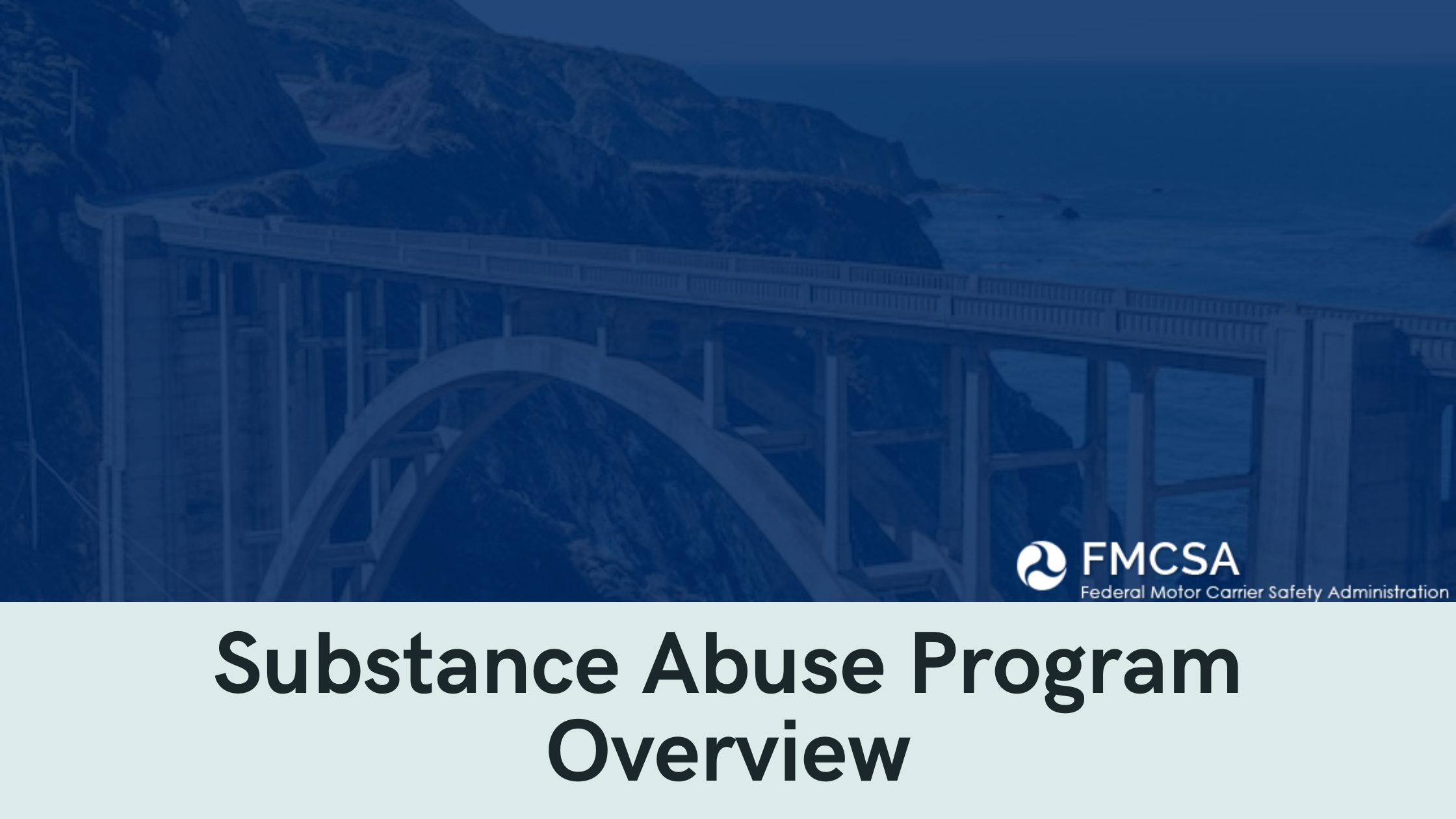In this blog, you will get a closer look at Substance Abuse Programs and the various requirements that companies and drivers need to know to stay in compliance. Before jumping in, here are some statistics about the state of substance abuse in the trucking industry.
- Failed drug tests in safety-sensitive industries are at the highest level since the turn of the century.
- Total drug violations reported in 2022 increased by 18% to 69,668, with the majority of violations related to marijuana, which increased by 31.6%.
- Nearly 130,000 CDL-holding drivers are currently in the Drug and Alcohol Clearinghouse database as failing urine tests.
- Legalization of the recreational use of marijuana was associated with a 6.5% increase in vehicle injury crash rates and a 2.3% increase in fatal crash rates.
Proposed Changes to Drug & Alcohol Testing Options
In recent years, a topic of interest in the industry and logistics companies in general has been allowing for saliva tests as an alternative or replacement for UA (urine analysis). There is some debate around the efficacy of saliva tests as well as a limitation of certified medical examiners qualified to offer such testing that is preventing adoption.
The detection period for oral fluid drug testing may vary depending on the drug being used. For instance, drugs like Xanax may only be detectable for 26 hours, while substances like Librium, Methadone, or Valium can be detected for up to 10 days. The detection time for THC, the active component in cannabis, is generally between 1 to 3 days, but can be up to 30 days for higher potency and/or dose. Certain hallucinogens such as LSD, Ketamine, phencyclidine/PCP, Psilocybin, and DMT may be detectable for 2 to 5 days. Alcohol can also be detected in saliva for up to 6 hours following the last drink.
Requirements when a Driver fails D&A test
When a professional driver fails a drug test, the company must take certain steps to comply with the regulations set forth by the Federal Motor Carrier Safety Administration (FMCSA).
Remove the driver from safety-sensitive duties: The driver who failed the drug test must be immediately removed from any safety-sensitive duties, such as driving a commercial motor vehicle (CMV) or performing any safety-sensitive functions related to the operation of a CMV.
Notify the FMCSA: The trucking company must notify the FMCSA within two business days of the positive drug test result. The notification must include the driver’s name, social security number, and the drug(s) for which the driver tested positive.
Provide the driver with information about substance abuse: The trucking company must provide the driver with information about substance abuse and treatment resources that are available to the driver.
Participate in/complete the treatment program prescribed: The driver must complete the prescribed program before returning to duty or working in a safety sensitive position.
Ensure the driver completes the return-to-duty process: The driver must complete a return-to-duty process, which includes a substance abuse evaluation, completion of a substance abuse treatment program, and passing a return-to-duty drug test. The trucking company must ensure that the driver completes all the necessary steps in the return-to-duty process.
Conduct follow-up testing: After the driver returns to safety-sensitive duties, the trucking company must conduct follow-up testing as directed by a substance abuse professional. The follow-up testing must occur at least once a year for a minimum of three years and the schedule must be documented.
Failure to comply with these requirements can result in penalties for the trucking company, including fines and loss of operating authority.
Rehabilitation & Returning to the Workforce
Some Information indicates an increase in the number of drivers who are receiving rehabilitation and returning to the driver seat. At the conclusion of 2020, just 12.5% of drivers who had previously tested positive were cleared to drive again. However, this figure grew to 22.7% in 2021, and once again increased to 27.6% in 2022.
It is important to note that these requirements are set by the Department of Transportation (DOT) and are designed to ensure the safety of the driver and the public. Failure to comply with these requirements can result in the driver being disqualified from driving a commercial vehicle.
Resources
2022 Pocket Guide to Large Truck and Bus Statistics
Return to Duty Process and Testing
Safety Management Cycle for Controlled Substances/Alcohol Basics



